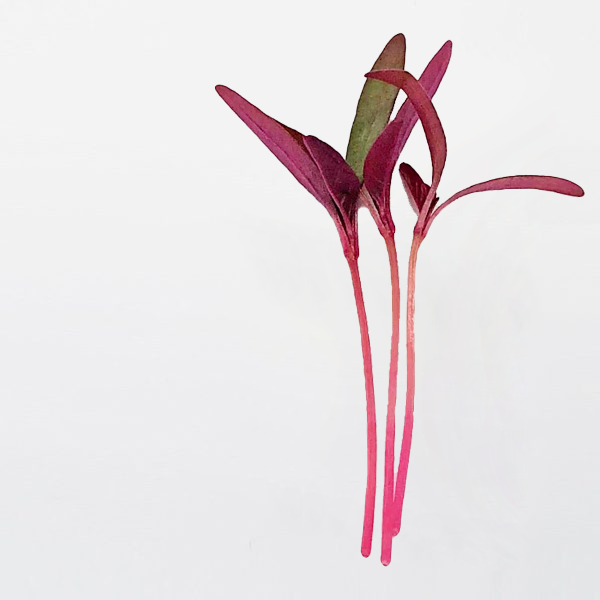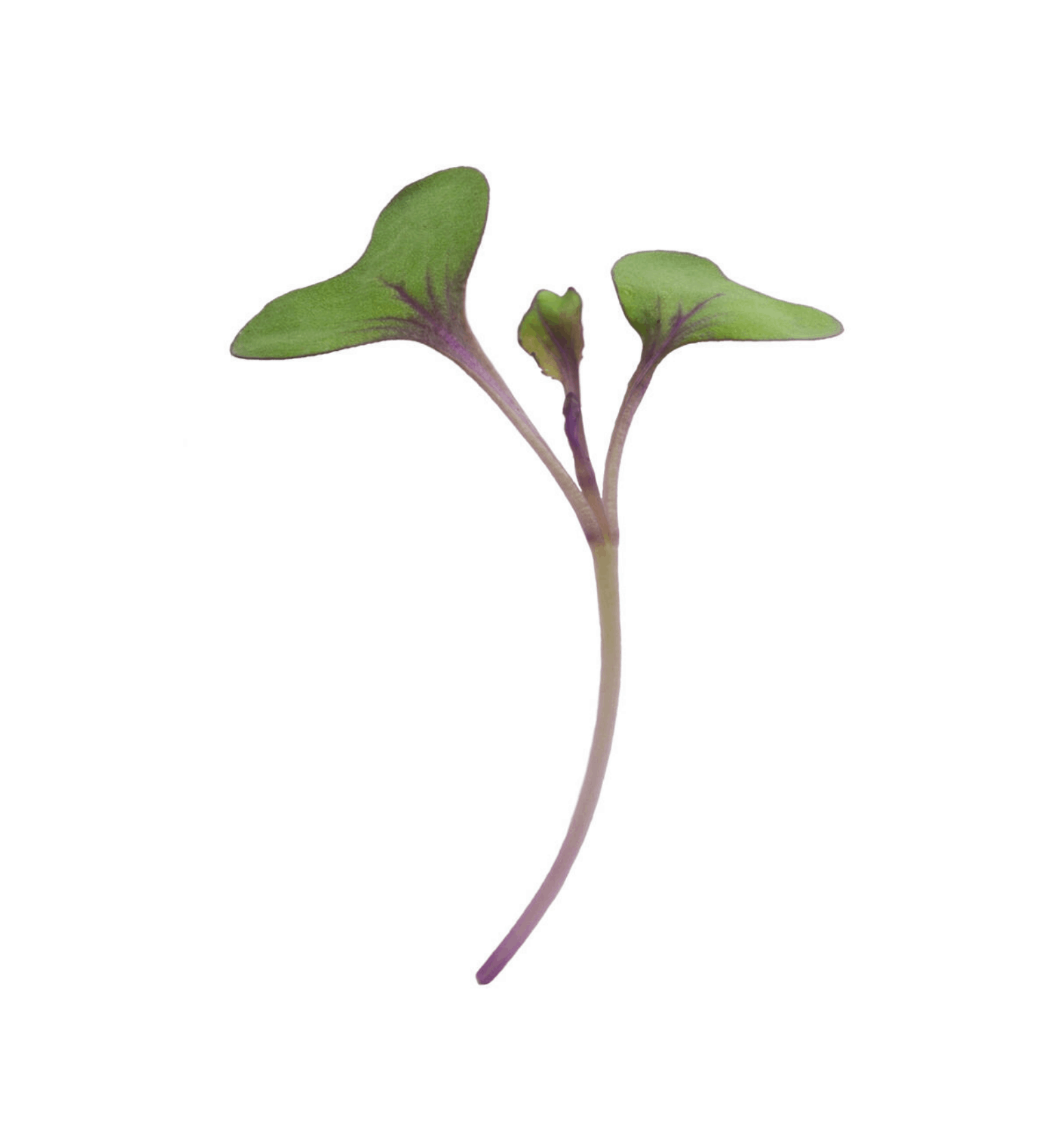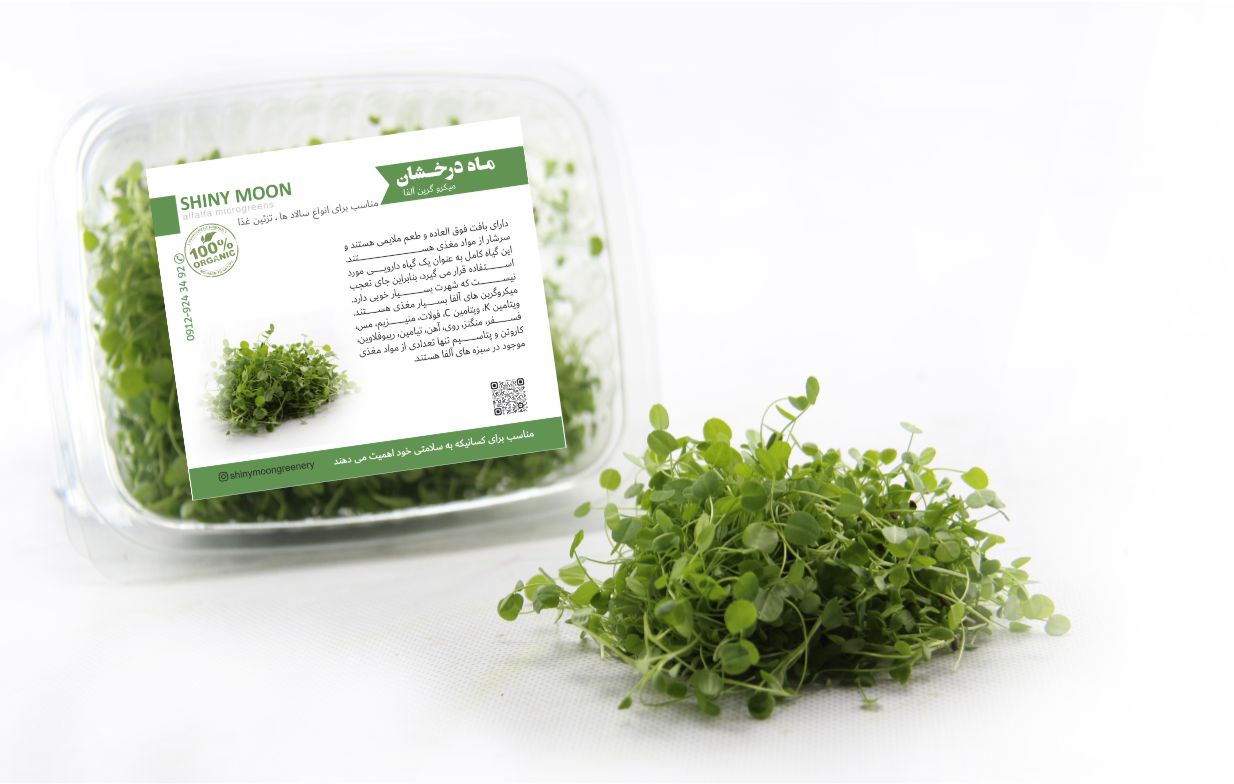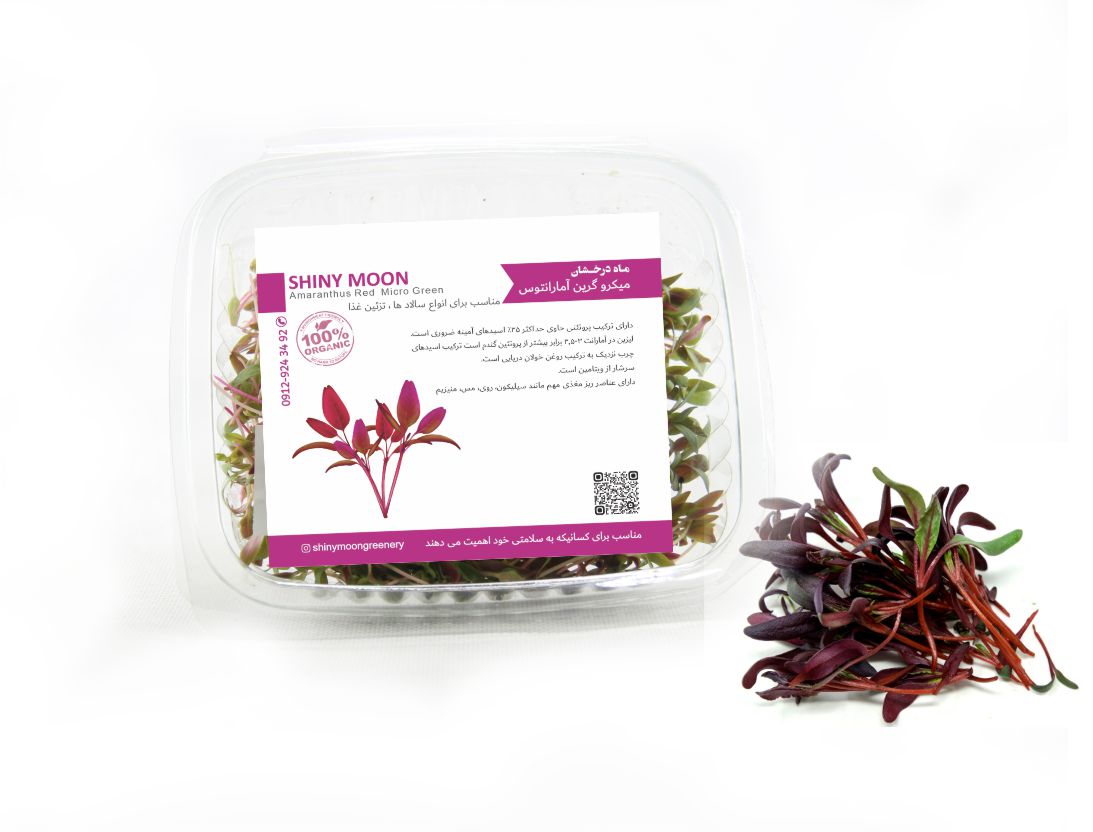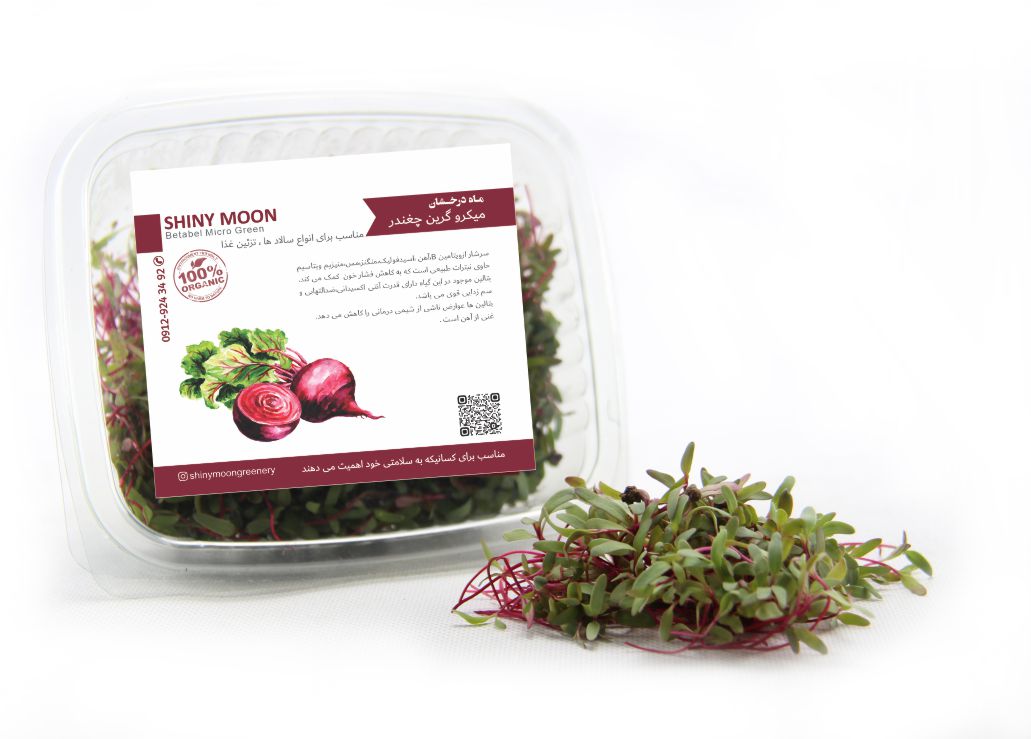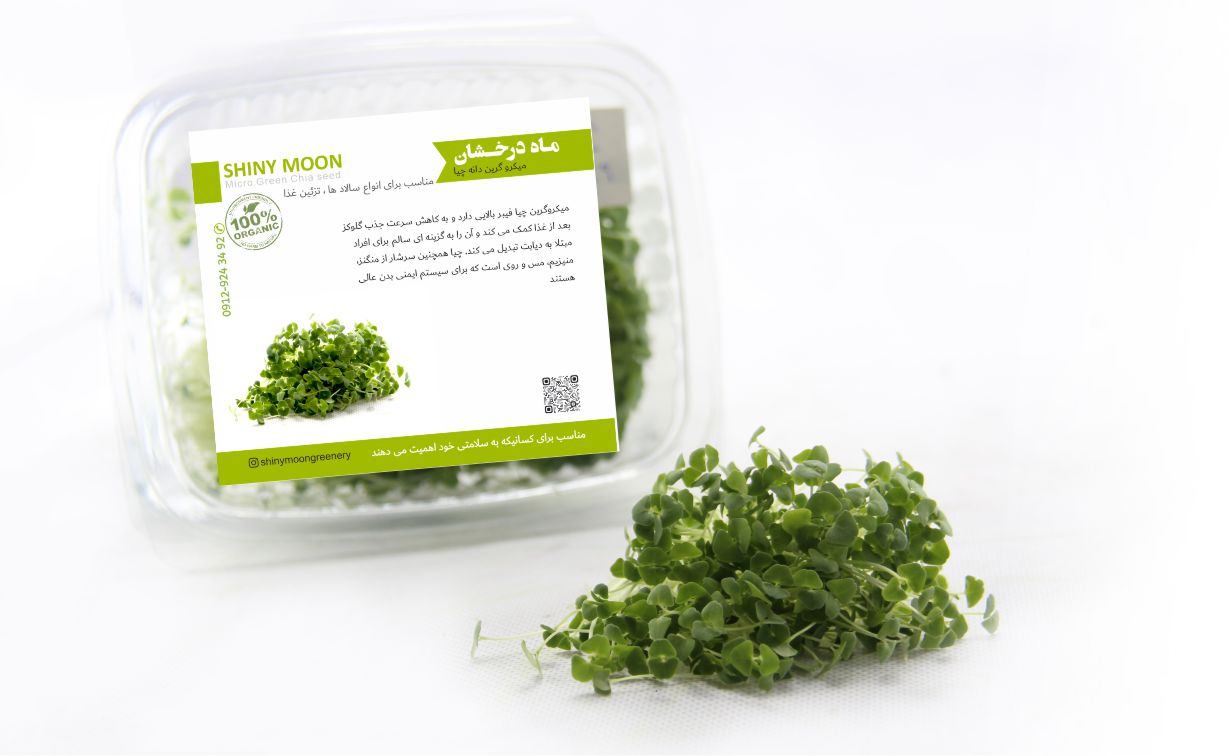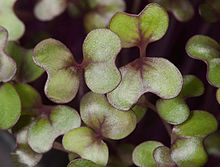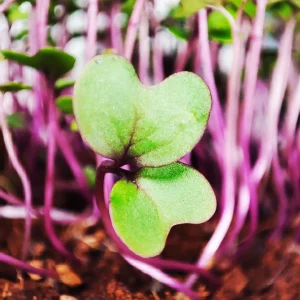shiny month
shiny month Company has started its activity in the field of specialized production of microgreens since 2019.
One of the goals of the company is the use of biocompost soil and organic seeds, which aims to produce completely organic products without using any chemicals.
The best selling products of the bright month
products Shiny month
Alfalfa
They have a wonderful texture and moderate flavor and are rich in nutrients. This whole plant is used as a medicinal plant, so it’s no surprise that it has a good reputation. Alpha microgreens contain vitamins K, C, folate, magnesium, copper, phosphorus, manganese, zinc, iron, thiamine, riboflavin, carotene, and potassium are just a few of the nutrients found in alpha greens.
Amaranthus Red
Amaranthus microgreen It has protein compounds containing up to 35% of essential amino acids. Among the crucial properties of Amaranthus, microgreens are strengthening the immune system, preventing hair loss and graying, osteoporosis, helping to treat cardiovascular diseases, and digestion. It has important micronutrients such as silicon, zinc, copper, and magnesium.
Basil
Basil Micro Green It is anti-inflammatory, antibacterial, and has strong adaptogenic properties. Anti-anxiety and stress. It is rich in antioxidants, magnesium, and a variety of vitamins.
carrot
Carrot leaves contain significant calcium and iron nutrients, vitamins C and A, and dietary fiber. There is no CHB or cholesterol in these leaves, and there are approximately 90 calories in one scoop of these raw leaves. The different K compounds of these leaves also contain phenolic vitamins and carotenoids, along with a small amount of antibodies, which are other oxidants.
Chard
It is rich in vitamin B, iron, folic acid, manganese, copper, magnesium, and potassium, it contains natural nitrates, which help lower blood pressure. Betalin in this plant has antioxidant, anti-inflammatory, and detoxifying powers. Betalins reduce the complications caused by chemotherapy. It is rich in iron.
Chia seed
Chia microgreens are high in fiber and help to slow down glucose absorption. Making it a healthy option for people with diabetes after meals. Chia is also rich in manganese, Magnesium, copper, and zinc. It is the source of omega-3s, which strengthen the immune system, improve heart function, and prevent Alzheimer’s disease.
Properties of microgreens
Answers to your questions about microgreens
Microgreens are young seedlings of edible vegetables and herbs. Unlike larger plants and vegetables that require a longer growth period, microgreens can be harvested and consumed one to ten days after the cotyledon leaves have developed.
Microgreens are exceptionally high in vitamins, minerals, and health-promoting components. For example, purple cabbage microgreens have forty times more vitamin E and six times more vitamin C, which can help detoxify the body and aid in weight loss. Coriander microgreens contain three times more beta-carotene. Amaranth microgreens, also known as “young plants,” have the highest levels of phylloquinone, a form of vitamin K. Radish microgreens have the highest concentration of tocopherol, a form of vitamin E. Given their high vitamin K content, microgreens are considered vegetables that can help lower blood pressure. Additionally, their high antioxidant content is a significant benefit. Antioxidants are crucial for eliminating free radicals, which are produced in the body due to factors such as air pollution, cigarette smoke, alcohol consumption, toxins, high blood sugar levels, excessive intake of saturated fats, disease, and intense exercise. Free radicals can weaken the immune system and damage cell membranes.
In fact, due to their high antioxidant levels, microgreens play a significant role in boosting your immune system and improving overall health.
Microgreens can be used in a variety of dishes according to your taste, including smoothies, salads, and as food garnishes. Pea microgreens offer a delicious and unique flavor for smoothies, and you can add chard microgreens to your red fruit smoothies. For highly nutritious smoothies, wheatgrass microgreens are an excellent choice.
If you want a special and colorful salad, you can use various microgreens such as purple cabbage, chard, sunflower (which will give your salad an unforgettable taste), corn, and more.
Radish microgreens add a unique and pleasant flavor to your pasta, while colorful microgreens like chard, amaranth, quinoa, and purple cabbage can be used to garnish appetizers such as hummus, pasta salad, baba ganoush, and tabbouleh.
Although microgreens are small and delicate, they can add a vibrant, nutritious, and delicious touch to your meals.
These products are prepared organically, but for added peace of mind, you can soak a packet of microgreens in a solution of water and a bit of salt for 5 minutes, then rinse before consuming.
Microgreen packets can be stored in the refrigerator at a temperature of 4 to 5 degrees Celsius for 5 to 7 days while still sealed.
After washing, microgreens will last for 2 to 3 days in the refrigerator if kept in a closed container.
Please avoid storing microgreens at room temperature for extended periods to maintain their quality and freshness.
Single and wholesale sales
One of the goals of Mah Darashkan company is:
To use biocompost soils
and mentioned organic seeds

